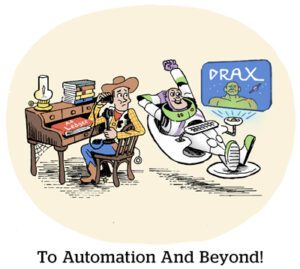 If addressable ad IDs are the new keys to the kingdom, then you’ll find The Trade Desk at Epcot this summer.
If addressable ad IDs are the new keys to the kingdom, then you’ll find The Trade Desk at Epcot this summer.
Which is to say, Disney and The Trade Desk announced an identity integration on Tuesday that will allow advertisers to activate against Disney’s first-party data programmatically via its clean room data product using Unified ID 2.0 (UID2) IDs.
“Disney is on this path to a future that is fully led by automation and addressability,” Matt Barnes, Disney’s VP of programmatic sales, told AdExchanger.
This new integration with The Trade Desk, which was born from recent meetings in Cannes, will accelerate Disney’s ambition to automate and target more of its overall pool of data, Barnes said. Advertisers will be able to more effectively find their audiences across Disney inventory and the added precision should help improve ROI and post-campaign results.
The UID2 integration is also part of a natural progression for Disney’s clean room data product, which launched in October 2021 with vendor partners Snowflake, Habu and InfoSum.
Initially, the Disney clean room focused on post-campaign analytics and attribution. Now Disney’s ready to take the next step into segmenting and activating audiences via the clean room. Ads Data Hub, Google’s version of a clean room, followed the same course in its development.
“We always bias towards action,” said Tim Sims, CRO of The Trade Desk. “How are we actually going to make this actionable? And that’s exactly what we’re doing here.”
Sims said that most of the programmatic industry, including the supply side of publishers and programmers, are “waiting to see how things play out” with advertising IDs and the erosion of third-party cookie data. “What’s unique here is that Disney and TTD are not waiting,” he said.
Disney remains agnostic to the many, many (many) online ad ID solutions out there, Barnes said. But Disney has a long history of working with The Trade Desk and UID2 is one of the most scaled open programmatic IDs.
For advertisers, the Disney clean room and UID2 integration should be mostly seamless. With the matching system in place, an advertiser can run a Disney campaign via The Trade Desk’s DSP without any additional work flow, Barnes said.
But that doesn’t mean the process isn’t complex on the backend. It’s a bit like a restaurant: tranquility out front but controlled chaos in the kitchen.
While an advertiser that’s logged into The Trade Desk and buys Disney inventory may benefit from the integration without any additional work or even any knowledge of the partnership, there’s a lot going on behind the scenes.
In the background, an advertiser’s first-party data, in the form of UID2s, is matched to synthetic IDs that represent Disney’s household audience graph.
“Synthetic” means that the ID has been stripped of identifiable data, other than an indication that a match has been made to some household.
Disney’s synthetic IDs will rotate after a month so they can be used for frequency capping or attribution over the course of a campaign, but can’t be used by advertisers to build consumer profiles of Disney viewers over time.













